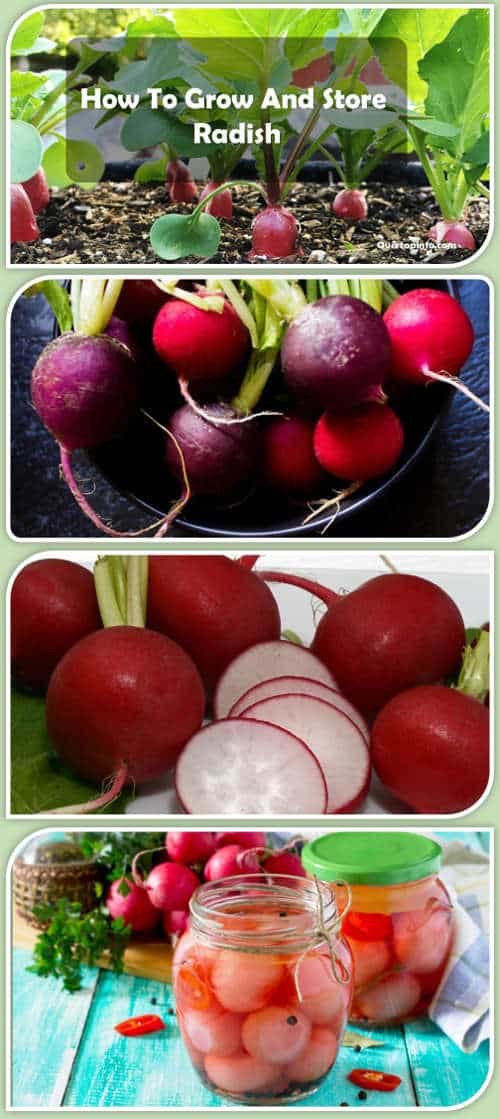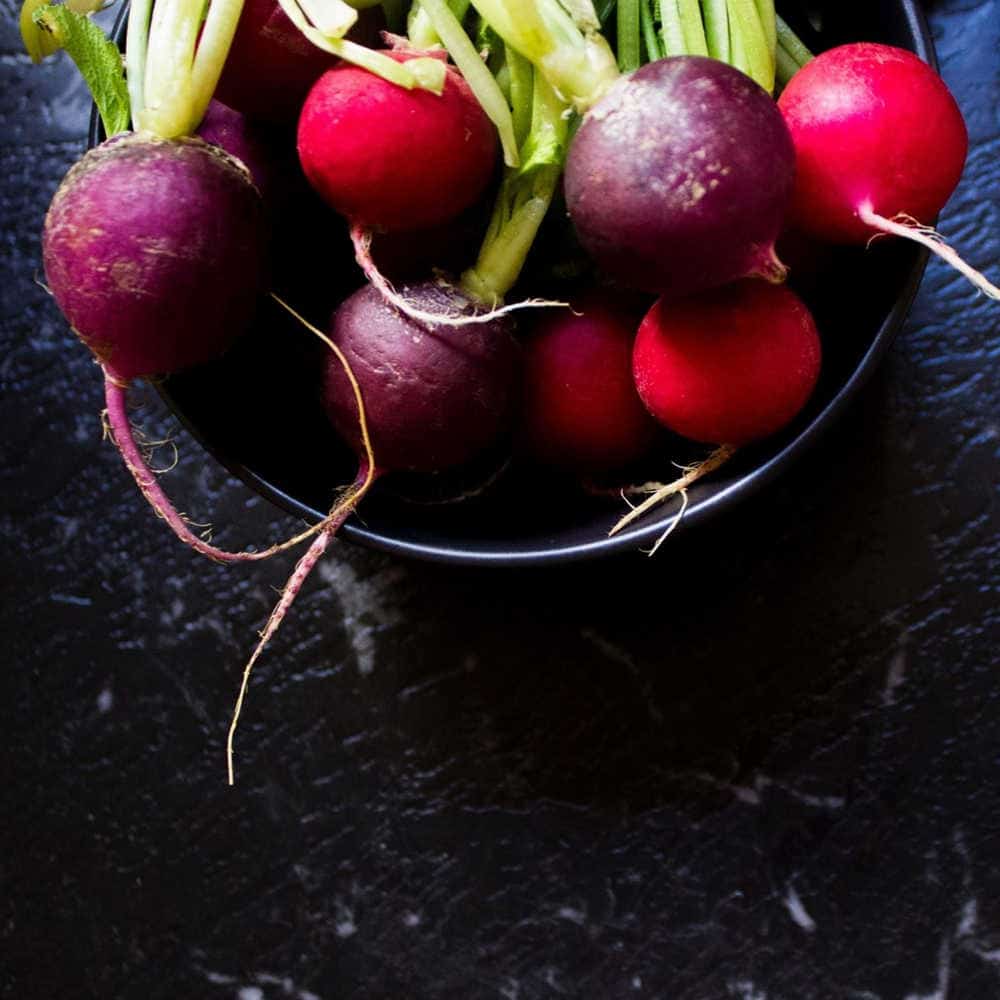Radish is one of the simplest and fastest-growing vegetables. There are several shapes and colors: pink radish, black radish, long radish, round radish, etc. These different varieties have different tastes and flavors. All the verities are dietary fibrous, rich in vitamin, Mineral, low caloric. Radish easily grows in the garden and container. Also, they are good for your garden soil because they help to keep soil airy.
To consider so many advantages I started writing a complete guide on radish cultivation. How to grow, maintain, harvest, store. Everything you will get here.
Let’s dive!
Quick Question-Answer: Important points for Growing Radishes
- When? Generally throughout the year. Preferably in spring or autumn.
- Where? It adapts very well both a lot of sunlight and partial shade but it is necessary to protect your crop during high temperature. The optimum temperature is between 18 and 22 ºC.
- How do we prepare the land? It adapts to any type of soil, although it prefers deep, clay, and neutral soils. The land must be well plowed, well-drained and weeds free. Spread a layer of compost about 1 cm. The compost will help you conserve moisture and regulate the temperature. If you prefer, you can also apply a good composition of peat and earthworm humus.
- How often should you water? In summer daily. You must keep the soil wet, but not soaked. If you water regularly, the radishes will grow fast. Although it is also necessary to be careful about the excess water. Due to the excess water, the tubers will grow bulky and hollow. On the other hand, Due to the less water the tubers can grow with a fibrous texture.
- Harvest time? One month after its sowing.
- Favorable associations? Lettuce, Spinach, and Carrots. They are also compatible with Chard, Celery, Eggplant, Peas, Beans, Potatoes, Cucumbers, Peppers, Leeks, and Tomatoes.
- Unfavorable associations? Cabbages, Cauliflowers, and Broccoli.
- Pest and diseases? Ants, Slugs, Snails, Aphids, Mildew, and Caterpillars.
How to Grow Radish from Seeds?
Before starting sowing, it is necessary to know first of all the favorable conditions for the development of radishes. It should be remembered that this vegetable particularly likes the humid earth, fresh, light, and soil without pebbles. If you plan to grow long radishes, you will need to have enough depth to ensure the growth of your vegetable. If the soil is poor enough, do not hesitate to add potting soil that radish particularly likes. It enjoys a mid-sunny exposure and temperate climate. In summer, it is necessary to envisage a little shade. That’s why the better time to grow radish is the spring and autumn when the sun is not too hot.
Grow Radish By Following The Steps:
- Prepare the garden soil: loosen it, clean, and remove the rocks completely.
- Keep the soil moist and cool with frequent watering and allow the water to flow well.
- Add sand to the soil when it is too heavy to promote rooting and drainage of rainwater.
- Add organic matter(compost, green manure) to the soil
- Remove weeds where the radish grows.
- Sowing the radish seeds:
-
- Bury the seed about ½ to 1 inch (1.5 to 2.5 cm.)
- Give space between two seed approximately 1 to 2 inches (2.5 to 5 cm.)
- Cover the seed with soil
Tips: Some gardener recommends clean the surface of the soil, create a space with insert a knife, put down the seed in that space, and cover the seed.
Whatever the variety (pink, red, or two-colored) and the shape (round or elongated) radishes, culture techniques remain similar.
How to Grow Radishes In container/pot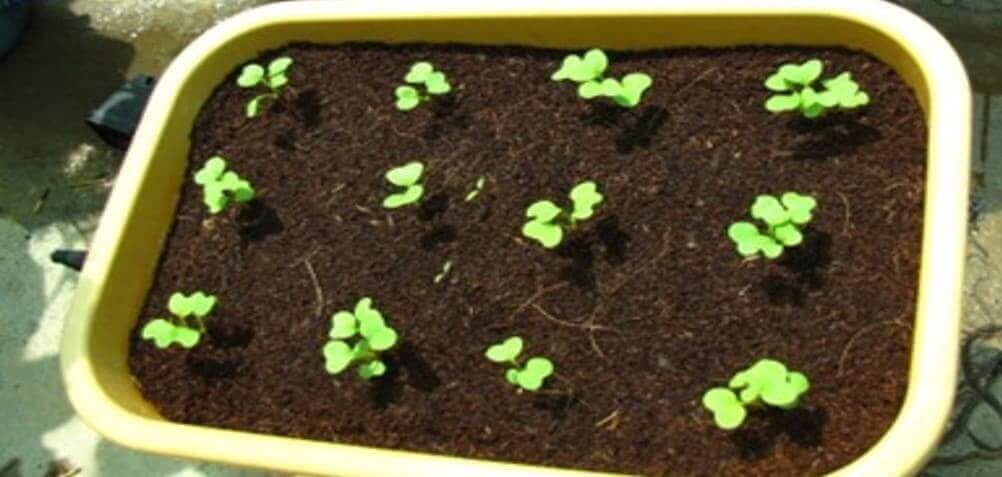
Enjoy a radish harvest in an apartment, on a terrace or balcony because it is possible to grow the radish in a container. It will be necessary to use potting soil and regularly control the humidity of the substrate. Tray culture is preferred small round radishes because they don’t require a great depth of land to develop.
The Equipment Used
- 6-12 inches deep container/pot
- Potting soil
- Knife/ Hand shovel
- Watering cane
Steps
- Fill the container with potting soil and posit it in a sunny area
- Sown the seed 1/2 inch deep and 1 inch apart
- Cover with potting soil
- Wet the potting soil
After 4-5 days they will germinate. Remove some radishes seedlings if you think need some space to grow and develop others.
Care and Maintenance of Radishes
Radish is very easy to grow and maintain. Once sown, It requires necessary even watering (uneven watering causes cracking)
- Maintain relatively cool soil by minimum 1-inch water per week especially in summer
- Make sure that the plant gets full sun
- Bound the earth to allow the water to flow well
- Remove weeds regularly
Common Pests and Diseases
Some of the most common pests and diseases affecting radish are:
Ants
Ants eat the seeds after sowing.
For control, you can try the nasturtiums, the lavender and the chopped leaves of laurel.
Snails and Slugs
They can significantly damage during the first weeks after germination.
To control them, it is recommended to collect them manually.
We can prevent the arrival of the snails by planting our plants in high places and Implements a drip irrigation system. You can spread sawdust, ash or eggshells. These prevent their movement. You can also place a cloth soaked in milk or beer at night and put it around the plants to deceive them and prevent them from reaching your crop.
Aphids
To control Aphids apply Potassium soap on the undersides of plants. You can also apply neem extract. If the number is very high.
Caterpillars
Caterpillars cause the rot of the fruit and the leaf.
To prevent its appearance it is recommended to remove the weeds regularly.
To control them, we can use water with biodegradable soap and extract of garlic and chili. This mixture is applied very early in the morning or in the afternoon when the plants no longer receive the sunlight.
Mildew
This fungus develops inside the leaves, stems, and fruits.
To prevent it eliminate weeds and crop residues and you should avoid excess moisture.
To control you can apply the extract of horsetail or sulfur dusted.
Bonus: 9 The Fastest Growing Veggies, You Can Also Grow
Crop Rotation with Radish
- Some vegetables are sowing after the curly endive, escarole, spinach, lettuce, or tomato.
- Radish particularly loves the presence of artichoke, eggplant, carrot, chicory, lettuce, peas, pears, tomatoes, or kohlrabi.
- On the other hand, radish hates the presence of squash, Cabbage, Cauliflowers, and Broccoli
When To Harvest Radish?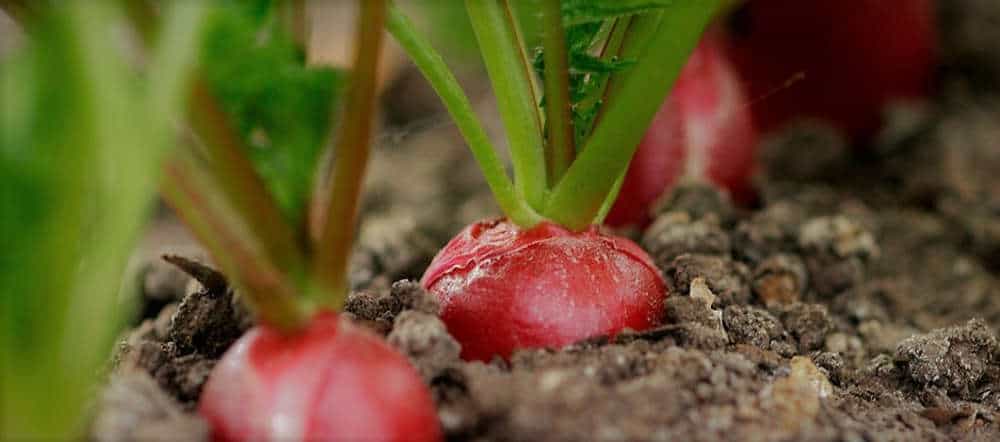
Radishes can be harvested any time between 20 and 60 days after sowing depending on the variety.
Spring radish can be harvested quickly (20 to 30 days) when the roots are about 1.5 to 3 cm in diameter. It’s better to harvest at the right time to get all the flavor.
The only risk with radish is that it becomes hollow and thus becomes indigestible.
- It is then necessary to harvest them regularly as soon as the radishes are formed.
- Do not let the radishes get too big (check the roots by scraping the soil), it is better to harvest them too small than too big.
How to Harvest Radishes from Your Garden?
Simply grab at the base of radish greens and pull up straight gently.
The main problem of harvest radishes is sometimes it remains in the soil after the pullout. It happens if you harvest immature radish or try to pull up curvedly.
How to Store Radishes: 4 Easy Methods?
Method#1: Storing Radishes in Cold Water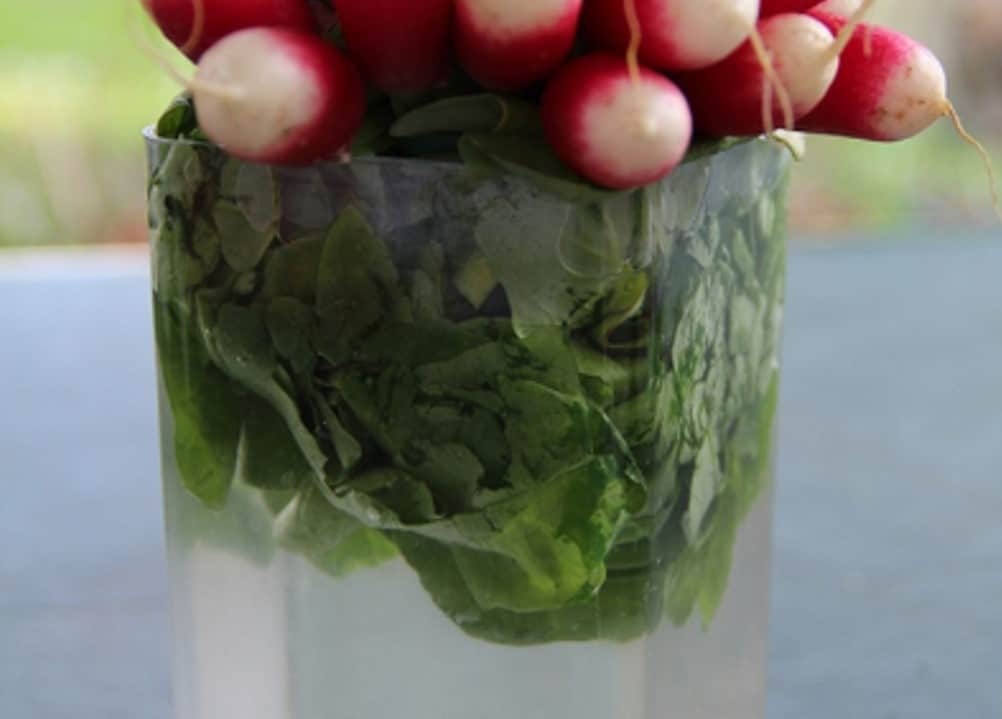
The most common and recognized method of store radishes is in the bowl of cold water.
Steps:
- Fill a container with cold water
- Place the radish leaves in the container
- Making sure that the rots can’t contact with the water.
- Put the container in the refrigerator or change the container water every day or even twice a day.
Another Way
Steps:
- Fill a bowl with cold water.
- Place the radishes in the water so that the roots are immersed in water, and the leaves will remain outside.
- Store the cold water bowl in the refrigerator.
This method will extend the life of your radish at least a week.
Method#2: Putting Radishes in Freezer Bags
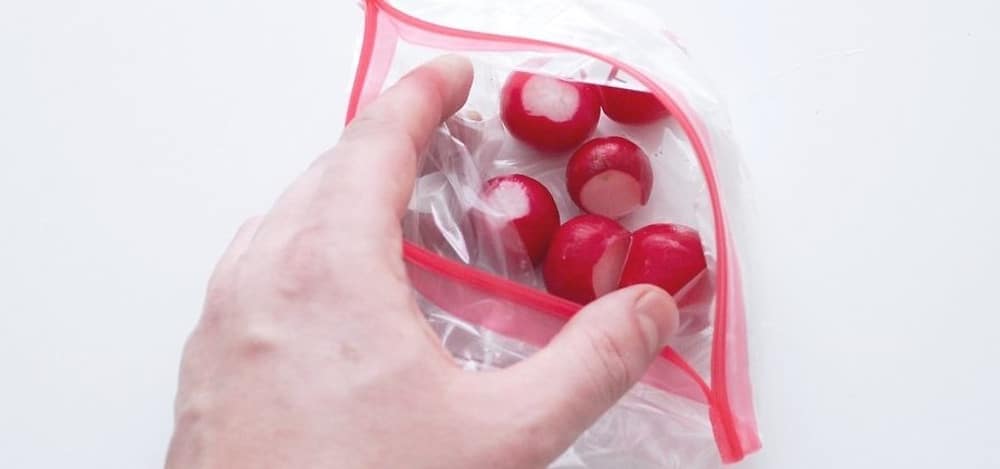
Steps
- Remove the small roots, leaves and faded parts of the radishes.
- Rinse thoroughly with water.
- Dry the radishes with a clean cloth or paper towel.
- Put the radishes into the freezer bag or the resalable Plastic Bag
- Press the bag and remove the remaining air then Seal the bag tight that no air can get into
- Store the bag in the fridge
Tips: You can use a canning jar instead of a plastic bag. After placing the radishes fill the rest of the jar with water. You can also store radish leaves. Radish leaves are nutritious and safe to eat.
You can perfectly store radishes for a few weeks with this method.
Method#3: Store Radishes in the Box of Sand
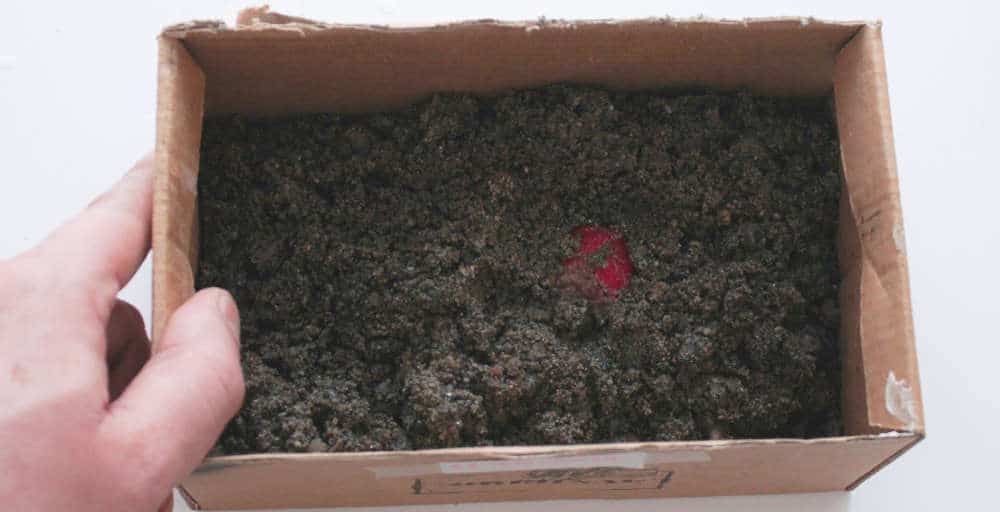
Steps:
- Fill a box with damp soil or sand.
- Cut the leaves without damage the roots
- Submerged the unwashed radishes in the damp sand
- Place the box in shade or refrigerator
- Spray some water after a certain period.
Note: Check the roots and moisture of the sand routinely. It is advisable to keep the sand wet but not soaked. In this way, you can keep them for a few months.
You can also store radishes in a wooden box. How will you do that? Follow the instructions:
- Find a dark place, preferably a basement. If you do not have a basement, you can create a similar environment by stacking boxes in a cool, dry place.
- Place the radishes in a wooden box (avoid cardboard boxes), Arrange the radishes, cover with straw. Make sure two radishes do not touch each other. You can also wrap each radish in a newspaper.
Method#4: Recipes for Radishes
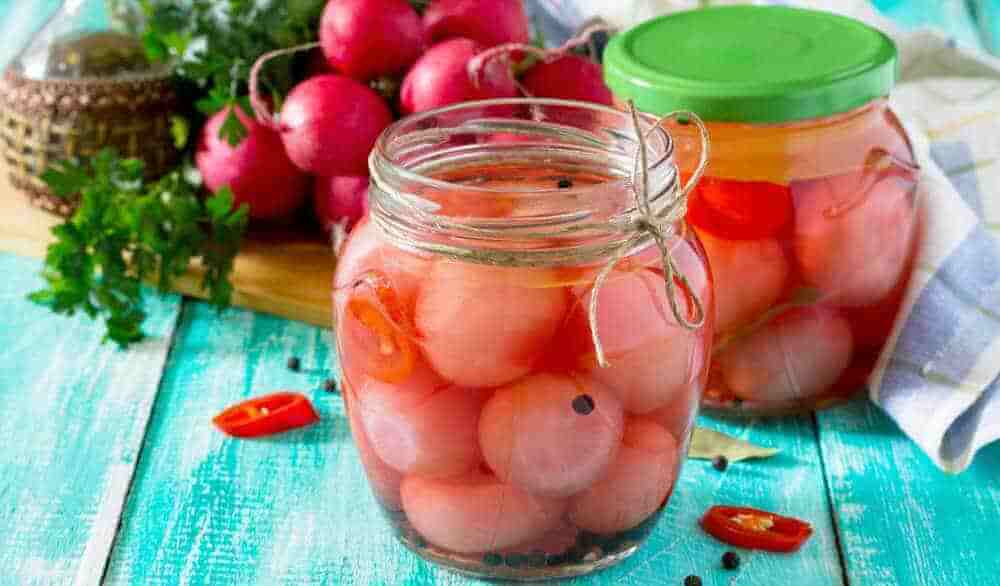
Did you know? The foliage of radish plants is edible. Indeed, there are many recipes for soups or salads made from the radish.
This is the best idea to store radishes for the long term. You can make soup, salsa, pickle, fries and many other delicious things.
Here are some recipes for you
last Word
Now you know how to grow, store, and eat a radish. But tell me why you should grow radish in your garden? I will answer for you, Radish has huge nutritive value, Eating radish can prevent lots of diseases that you never imagine.
I hope it helps. If you like, Pin It and share with your friends
